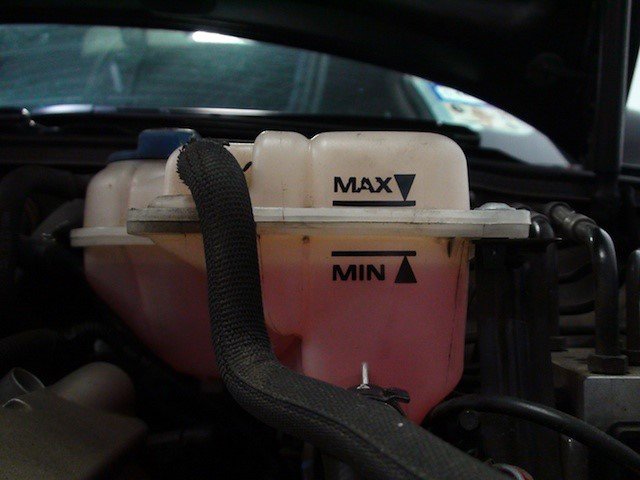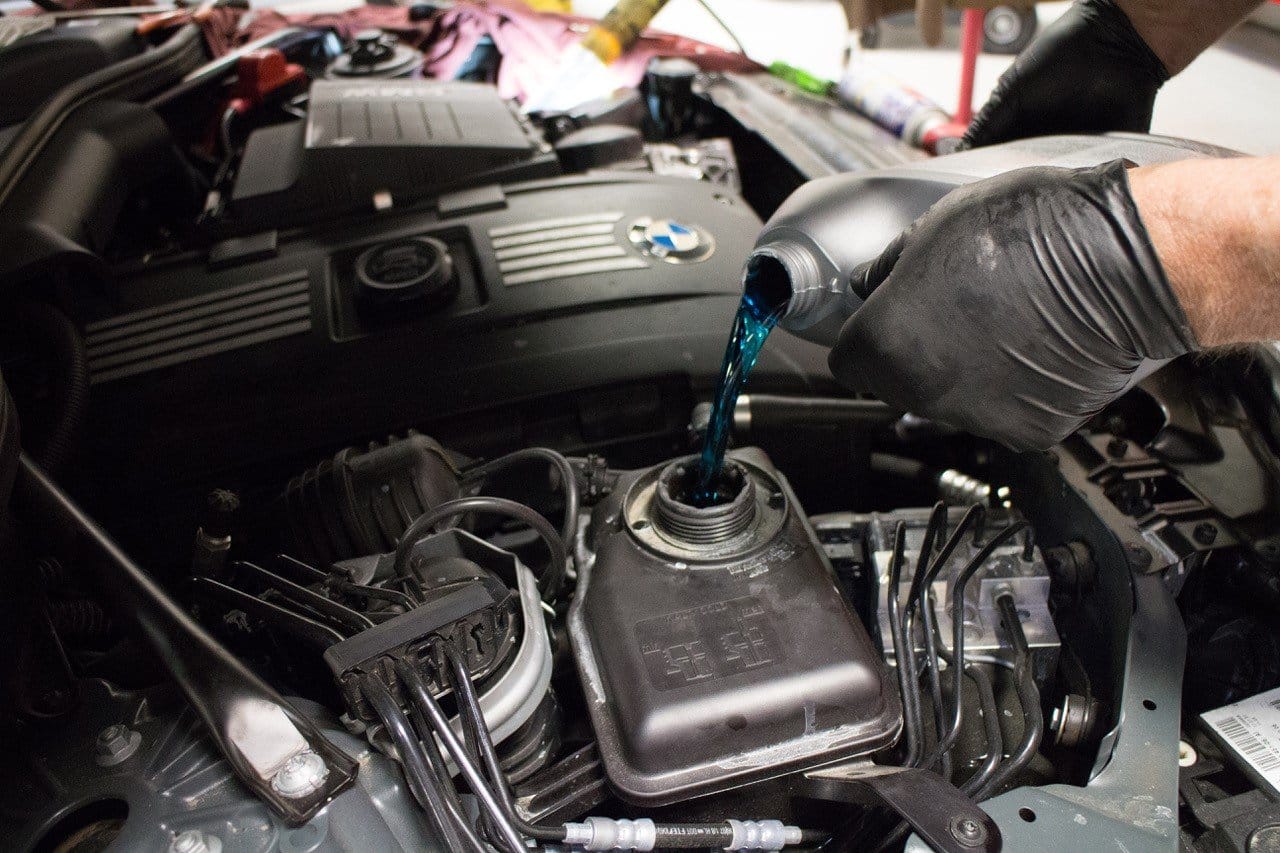Cooling System
Why is your LOW Coolant Level light on when you don’t have any visible leaks?
Coolant, like most fluids, tends to respond to temperature changes by expanding as it gets warmer and contracting in volume when colder. Most expansion tanks have a minimum and a maximum level indicator on their side, depicted in the photo, below. On cold mornings, coolant levels will be on the minimum range, as the coolant temperature rises to its operating range, the level increases to the “max” line. Over time, the process of expansion, contraction, and evaporation, may cause the level to drop below the minimum level, in which case, you need to top it up. However, when you have to top off the coolant once a month or week, which is a tell-tale sign of a slow coolant leak somewhere in the system.
A small amount of seepage through a gasket or a leaky hose may not show coolant on your garage floor, but it will eventually cause a problem.
Learn what engine coolant does and why it’s so critical for your engine’s cooling system to be kept in good operating condition at all times.
What is engine coolant? Essentially, it’s a mixture of water and chemicals that serves to regulate the engine’s operating temperature and prevent it from overheating. When you consider that your engine operates by generating a rapid series of contained explosions produced by the combustion of gasoline or other liquid fuels, it’s easy to see why keeping all that heat produced by it under control is so critical, lest it get out of hand.
With insufficient levels of coolant to regulate your engine’s temperature, it can quickly overheat. When an engine overheats, it becomes increasingly susceptible to…
What color coolant for your European car?
Think all types of car engine coolant are the same? You could be setting yourself up for a major headache.
Does antifreeze color matter? Are there different types of antifreeze? Differences in the various types of coolant (or “antifreeze”) run far deeper than just their color…


